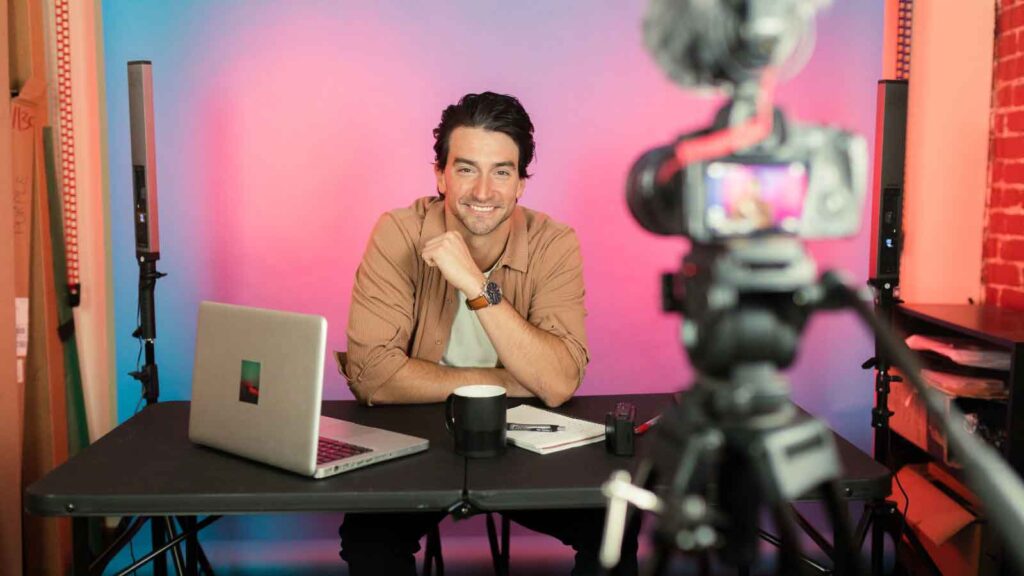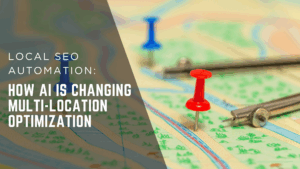Many brands today are hitting a wall with their digital marketing. Paid ads feel intrusive, organic reach keeps dropping, and customer attention spans continue to shrink. Add to that the looming challenge of content decay in 2025, where once-effective content quickly loses relevance in fast-moving digital spaces.
Brands feel the squeeze. They invest heavily in campaigns that barely move the needle because the traditional playbook no longer applies.
Influencer partnerships have become a key answer to these challenges. They allow brands to tap into authentic voices, regain consumer trust, and sustain visibility in spaces where audiences spend most of their time, like social feeds, podcasts, and creator-led platforms.
As such, in this blog, we’ll unpack influencer partnerships, why they’ve become essential in modern marketing, and how brands are leveraging them effectively in 2025. We’ll also explore how these partnerships help brands increase their conversion rate optimization.
Understanding Influencer Partnerships in Modern Marketing
Influencer partnerships in 2025 go far beyond simple product placements or sponsored posts. They’re about aligning a brand’s story with voices that consumers already trust and engage with.
An influencer acts as a bridge between the brand and their community, introducing products or services in a way that feels organic and native to their platform. It’s not about reaching the masses with a one-size-fits-all message.
The unique selling point of this approach is precision storytelling within engaged, niche communities.
Modern influencer marketing is data-driven. Brands use advanced tools to analyze audience demographics, behaviors, and engagement quality before selecting an influencer. They look beyond follower counts to assess trust, authenticity, and historical campaign performance.
Here, it can also be said that the best partnerships aren’t transactional; they are built on shared values, mutual benefit, and precise alignment in both message and audience.
Most importantly, influencer partnerships have become a core marketing discipline rather than an experimental add-on.
Brands now build influencer strategies into their broader marketing frameworks, ensuring that influencer-generated content integrates seamlessly with other channels like paid social, email marketing, and offline activations.
Transform Your Online Strategy with The Ad Firm
- SEO: Achieve top search rankings and outpace your competitors with our expert SEO techniques.
- Paid Ads: Leverage cutting-edge ad strategies to maximize return on investment and increase conversions.
- Digital PR: Manage your brand’s reputation and enhance public perception with our tailored digital PR services.
The result? A cohesive, multi-touch experience that meets the consumer where they are, delivered by a voice they already know and trust.
How Influencer Partnerships Will Dictate 2025’s Marketing
Influencer partnerships are no longer peripheral. In 2025, they will become central drivers of marketing strategy. Consumers increasingly rely on creators they trust to filter the overwhelming flow of information.
This trust translates into faster buying decisions and deeper brand loyalty. Influencers now play a critical role in filling the gap left by the diminishing effectiveness of traditional advertising and branded content.
Marketers are adapting quickly. They see influencers as key players in shaping purchasing decisions and setting cultural trends. Campaigns built around creators are proving to be more agile, relatable, and impactful than those relying on traditional media alone.
Influencer-driven content performs well across platforms, giving brands more value and reach through social media marketing.
And to give context on how all this will pan out, here are key ways influencer partnerships are dictating 2025’s marketing strategies:
- Shifting from one-off promotions to long-term influencer collaborations.
- Influencers are becoming co-creators of product lines and brand experiences.
- Using influencer-generated content across owned, earned, and paid channels.
- Leaning on influencers to drive community engagement and retention.
- Elevating influencer content into mainstream advertising formats like TV and OOH.
This evolution forces brands to rethink how they allocate budgets and measure success. Influencer partnerships now serve as a foundation for broader campaigns, not as isolated tactics.
Ultimately, brands that embrace this shift see stronger customer relationships and more resilient marketing ecosystems.
Strategic Approaches Brands Use to Leverage Influencer Partnerships in 2025
In 2025, brands approach influencer partnerships with precision. It’s no longer about chasing follower counts or quick wins. Success depends on finding the right creators, structuring partnerships carefully, and using data to drive decision-making.
Let’s break down the key strategic approaches brands use to get it right:
Finding the Perfect Influencer Match for Your Brand
Selecting the right influencer requires understanding your brand’s voice, audience, and values.
Streamline Your Digital Assets with The Ad Firm
- Web Development: Build and manage high-performing digital platforms that enhance your business operations.
- SEO: Leverage advanced SEO strategies to significantly improve your search engine rankings.
- PPC: Craft and execute PPC campaigns that ensure high engagement and superior ROI.
In 2025, brands use AI-powered tools and manual research to analyze an influencer’s audience demographics, engagement patterns, and historical partnerships. They focus less on surface metrics and more on fit and authenticity.
Brands also review the influencer’s content style, tone, and storytelling approach. Collaborations succeed when there’s a natural alignment between the creator’s lifestyle and the product.
The most impactful partnerships feel seamless because the influencer genuinely believes in the brand and shares it with their audience personally and relevantly.
Getting the Most Bang for Your Buck with Influencer Campaigns
Brands in 2025 stretch their influencer budgets by integrating creator content into multiple marketing channels. They negotiate usage rights upfront, allowing them to repurpose influencer videos, photos, and testimonials in ads, websites, and even print materials.
They also structure deals to include performance-based incentives, rewarding influencers for driving clicks, conversions, or sign-ups. This motivates creators to deliver results while allowing brands to justify spending based on clear ROI metrics.
Brands that treat influencers as partners, not vendors, see better collaboration and campaign outcomes.
Why Micro-Influencers Are Delivering Better Results Than Celebrities
Micro-influencers consistently outperform celebrities in driving engagement and conversions. Their smaller, more niche audiences tend to trust them more and engage with their content at higher rates.
In 2025, brands see micro-influencers as the go-to choice for campaigns that require authenticity and community connection.
They also offer better cost efficiency. Brands can work with multiple micro-influencers for the same budget as one celebrity, giving them access to diverse audiences and voices. This approach builds more grassroots-style momentum, especially for product launches and awareness campaigns that thrive on peer-to-peer recommendations.
Creating Content That Doesn’t Feel Like an Ad
In 2025, consumers reject content that feels staged or overly branded. Brands succeed by giving influencers creative freedom to present the product authentically. This means focusing less on scripted messaging and more on personal stories, demonstrations, and casual integrations.
Boost Your Business Growth with The Ad Firm
- PPC: Optimize your ad spends with our tailored PPC campaigns that promise higher conversions.
- Web Development: Develop a robust, scalable website optimized for user experience and conversions.
- Email Marketing: Engage your audience with personalized email marketing strategies designed for maximum impact.
Brands also align influencer campaigns with cross-channel marketing strategies, ensuring the content flows naturally across social, email, websites, and paid ads.
This consistency helps create a seamless customer journey while keeping the tone conversational and relatable, regardless of where the audience encounters the content.
Avoiding Common Influencer Partnership Mistakes and Legal Pitfalls
Mistakes in influencer partnerships can damage both brand reputation and legal standing. Brands in 2025 avoid these risks by creating clear contracts outlining deliverables, timelines, content rights, and FTC disclosure requirements.
They also vet influencers thoroughly to avoid partnering with creators who have engaged in questionable behavior or misleading practices.
Brands ensure content meets legal standards by working closely with legal teams and monitoring content before it goes live. They also educate influencers on compliance to protect both parties.
These proactive steps minimize risks and build lasting, trust-based, creative, and compliant partnerships.
How The Ad Firm Can Help You
Navigating the fast-evolving landscape of influencer partnerships in 2025 can be challenging. From finding the right voices to ensuring campaigns align with your brand’s goals, there’s a lot to manage.
That’s where The Ad Firm, a trusted digital marketing agency, comes in.
We work closely with brands to develop tailored strategies that make influencer marketing more focused, effective, and aligned with larger business objectives. Whether you’re exploring influencer partnerships for the first time or refining an existing approach, we provide the strategic guidance and marketing expertise to help you get more out of your efforts.
By aligning your brand’s message with the right content creators, we help you build meaningful connections with your audience and drive long-term value.
Let’s strengthen your influencer marketing strategy in 2025? Contact The Ad Firm today to see how we can help your brand grow with smarter, more impactful partnerships.






